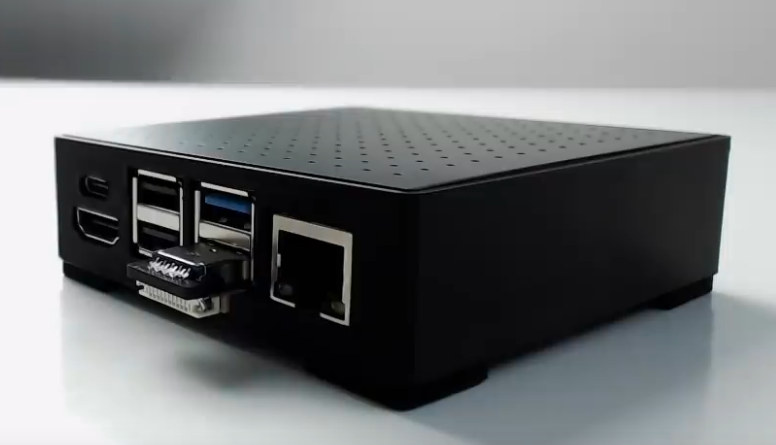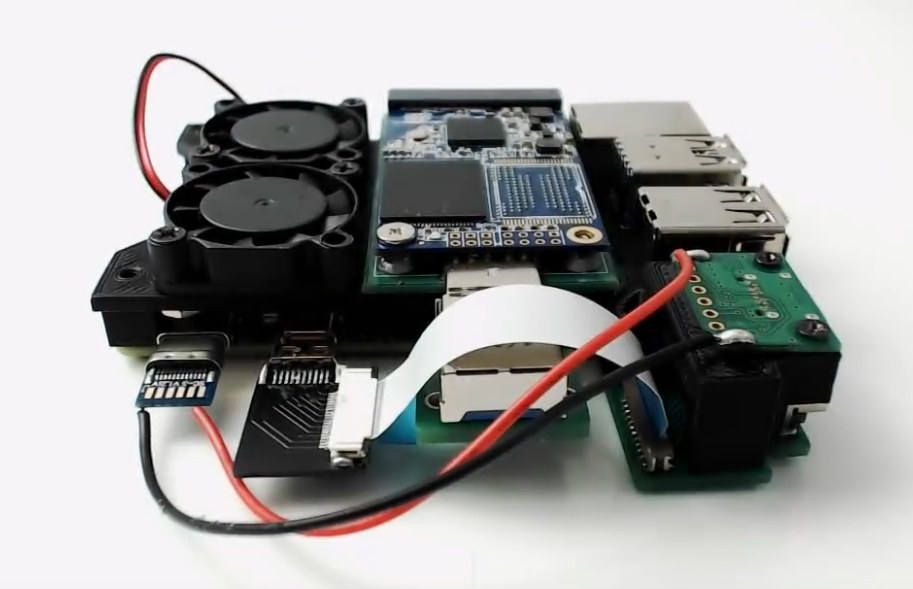Hardware hacker NODE has had a busy month starting with the announcement of Zero Terminal V3 modular Raspberry Pi Zero W powered handheld PC, and now he’s just showcased NODE Mini Server V3 that transforms a Raspberry Pi 4 into a compact server or mini PC.
The project brings all ports to the same side in a similar fashion as Argon One enclosure through the use of custom adapter boards, but also enable easy integration of USB SSD drives, easier access to the MicroSD card socket, and support for fanless or dual-fan cooling.

Besides the Raspberry Pi 4 SBC, NODE Mini Server V3 includes the following components:
- HDMI
- Micro HDMI Male Component. “Wedge Type” as this HDMI connector on Aliexpress.
- HDMI Type A Connector (47151-1001)
- USB
- Pololu USB 2.0 Type-C Connector Breakout
- USB-C Male Plug Breakout Board
- Male USB 3.0 Plug (692112030100)
- Female USB 3.0 Connector (48405-0003)
- Storage
- USB3 to mSATA SSD Adapter (Smooth Underside)
- Male USB 3.0 Plug (692112030100)
- mSATA Solid State Drive up to 2TB
- MicroSD SMT socket (Generic)
- Fan – Optional 1x or 2x 25x7mm 5V Fan (JST XH 2-Pin connector)
- Cables
- 10-pin 100mm 1mm Pitch Flex Cable
- 20pin 50mm 0.5mm Pitch Flex Cable
- Connectors
- 2x 10-pin 1mm Pitch Connector – (52271-1079)
- 20-pin 0.5mm Pitch Connector (52746-2071)
- 20-pin 0.5 Pitch Connector (20FLZT-SM1-TF)
- Custom PCBs
- Top Cover PCB (88x88mm 1.6mm thick)
- Male USB3 PCB (7x14mm 2mm thick)
- Female USB3 PCB (19x14mm 1.6mm thick)
- HDMI-A PCB (21x24mm 1.6mm thick)
- Micro HDMI PCB (14x18mm 1mm)
- Micro SD PCB (52.8mm x 49.2mm 0.8mm thick)
- Screws and bolts
- 5x M2.5 6mm countersunk screws
- 4x M2 20mm countersunk screws
- 4x M2 6mm x 3.5mm brass threaded insert
- 4x M2.5 10mm screws for securing fans
- 4x M2.5 hex nuts
As for all NODE project, Mini Server V3 is a DIY project, and you’ll find the project source files and editable PCB files on the project page. In a couple of weeks, he’ll sell devkits with custom PCB’s and all parts to early adopters. The 3D printed case measures 92 x 92 x 26 mm.
Some of the use cases envisioned for the design include the decentralized web, crypto nodes, seed servers, VPN, or a general Linux VPS. The device could also host your own website, serves as a media server, aNAS, or just a mini PC with faster SSD storage.
Via NoteBookCheck

Jean-Luc started CNX Software in 2010 as a part-time endeavor, before quitting his job as a software engineering manager, and starting to write daily news, and reviews full time later in 2011.
Support CNX Software! Donate via cryptocurrencies, become a Patron on Patreon, or purchase goods on Amazon or Aliexpress





